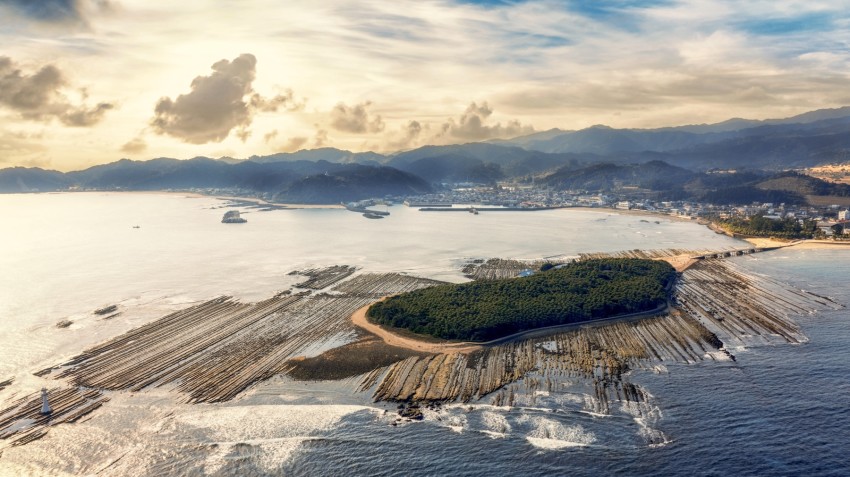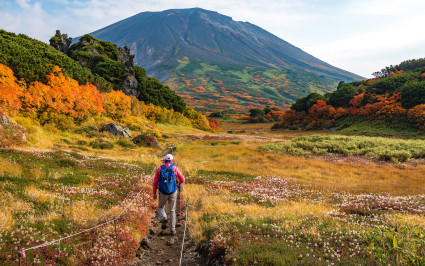Located on the southern island of Kyushu, Miyazaki Prefecture sits between Oita’s renowned onsen towns to the north and Kagoshima, the region to the south noted for its famed black pork. While often overshadowed by its famous neighbors, Miyazaki has its fair share of historical gems, scenic nature and delicious cuisine. Japan’s mythological roots lay in the mountains and seas around Miyazaki, while one of the country’s oldest national parks and most delectable poultry dishes can also be found in this southern prefecture.
Getting there is easy enough, too. Fly into Miyazaki Airport from Tokyo in about two hours or connect from another of Japan’s major cities. Traveling by rail? Take the shinkansen (bullet train) to Kagoshima and grab a limited express directly to Miyazaki City.
Japan’s mythological past

According to some of Japan’s oldest historical texts, Miyazaki Prefecture is home to several key locations in the country’s mythology.
Mimitsu Historical District
Mimitsu is located in the northern part of central Miyazaki and developed into a key port town during the Edo period. Buildings constructed in the late 19th and early 20th centuries have been preserved in the city’s historical district. Check out the Mimitsu General Hall and explore the inside which has been faithfully restored. To learn more about Mimitsu’s role in maritime trade, head over to the Hyuga City Folk and History Museum.
Long before the days of Edo, legends speak of Mimitsu as the place where the mythological Emperor Jimmu launched a military campaign to conquer the archipelago. You can see remnants of this history throughout the city. One story recalls Jimmu praying for safe voyages at Tateiwa Shrine while another describes the stone where the legendary leader once sat.
Udo Jingu

To the south of Miyazaki City along the picturesque Nichinan Coast, Udo Jingu is associated with fertility and popular with women and couples. Its origins stretch back into Japan’s mythological past and feature the birth of some of the oldest deities in the Shinto pantheon. Many of its physical features, such as the main hall, were built in the early 18th century. With the crashing waves of the Pacific off its coast and vermilion torii gates lining the cliffside, you’ll see why Udo Jingu has been designated a place of scenic beauty.
Near the cave shrine, you’ll come across several stalls with pebbles for sale. Buy a few and make a wish as you try to throw them into a small hole over the cliff. Men are expected to throw with their left arm while women can use their right. If you manage to land a pebble in the hole, it’s said that your wish will come true.
Amano Iwato Jinja

Amano Iwato Jinja is associated with Amaterasu, one of Japan’s most ancient deities. The shrine sits above Ama no Iwato gorge, a place where the sun goddess once retreated following a dispute with her brother. With Amaterasu in hiding, the sun disappeared until she returned. While this cave is inaccessible, you can view it from behind Amano Iwato Jinja’s Nishi-Hongu main hall.
About 10 minutes away on foot, you’ll find Ama no Yasukawara, another cave where deities gathered to discuss how to draw Amaterasu out of hiding. Here, there is a torii gate surrounded by an incredible number of stones left by people who have visited the site. It’s said that leaving a pile of stones will grant your wish.
Mount Karakuni

Designated a national park in 1934, Kirishima-Kinkowan covers over 36,000 hectares of land between Miyazaki and Kagoshima. Situated on its borderlands, Mount Karakuni (1,800 m) is regarded as a beautiful hike that takes you through both prefectures. Starting and ending at Ebino Eco-Museum Center on the Miyazaki side, the circular trail covers about 10 kilometers and takes approximately five hours to complete.
Along the way to Mount Karakuni, you’ll pass through the Ebino Highlands. If you’re lucky, you’ll catch a glimpse of Ebino deer in their natural habitat. From the summit, you’ll see a massive volcanic crater measuring almost a kilometer in diameter, one of several in the park. On clear days, you can also see other peaks, including Kagoshima’s Mount Sakurajima. Depending on the season, your hiking trail will be adorned by Kyushu azaleas or Japanese witch hazel.
Miyazaki’s famed chicken

Chicken reigns in Miyazaki.
Jitokko chicken
Jitokko is a specially designated brand of free range chickens raised in Miyazaki. These chickens were once considered such a delicacy that they were gifted to feudal lords. Compared to the average chicken you’ll find elsewhere in Japan, Jitokko chickens have larger living spaces and are raised for nearly twice as long. As a result, Jitokko chicken meat tends to be more tender and flavorful.
While there are many ways to enjoy cooking these chickens, such as yakitori (skewered and grilled) and mizutaki (chicken boiled in water along with seasonal vegetables), the most popular method is charcoal-grilled.
Chicken Nanban

We can’t talk about Miyazaki and chicken without mentioning Chicken Nanban. Nanban refers to Europeans who visited Japan in the 16th century. As Japanese and Europeans increasingly came into contact throughout the century, they engaged in cultural exchange. Using sweet vinegar for cooking was one of the culinary ideas that crossed the oceans.
Fast forward to the end of World War II when a local restaurant in Nobeoka City began serving chicken fried with sweetened vinegar and served with a sweet and sour sauce. Chicken Nanban was born. Since then, two slightly different varieties developed, one with a sweet and sour sauce and another with tartar sauce. Try out both and see for yourself which one is best!
More to explore

There’s lots of natural beauty throughout Miyazaki beyond what we’ve covered above. Here’s a few more ideas to whet your appetite for visiting southern Kyushu.
- Takachiho Gorge
Whether it’s from the observation point or in a rowboat, enjoy the autumn foliage and 17-meter high Manai Falls. - Aoshima
Off the coast of Miyazaki City, Aoshima is home to beautiful nature, white sandy beaches and Aoshima Shrine. - Heiwadai Park
Opened in 1940, Heiwadai Park is a quiet green space in the capital city that houses the unique Haniwa Garden.
















No Comment
Login to comment